Himeji
last update: August 16, 2021
Himeji (姫路) is a medium-sized city of about 500,000 inhabitants, located in Hyogo prefecture, and is the second largest city in the prefecture after Kobe. It is one of the most popular day trips for tourists staying in the Osaka and Kyoto area, and who travel to Himeji to visit its sumptuous castle, a World Heritage Site and considered by many to be the most enchanting feudal castle in Japan that survived until today.
Things to do and things to see in Himeji
The city of Himeji is one of the most famous and visited places in the Kansai region. All its fame is due to the wonderful
castle of the city, the first place in Japan to be included among the World Heritage Sites, in 1993. Around the castle and the large park that surrounds it there are some other minor tourist attraction.
Another interesting tourist location, although outside the city center, is
Mount Shosha and its temples.
Himeji station area
The area around Himeji main station is, as usual in Japan, one of the liveliest in the city for shopping and restaurants.
The liveliest part is the area north of Himeji station, where you can find some department stores (Sanyo, Forus, Yamatoyashiki).
Also from the north exit of the station you can easily walk along
Otemae Dori, a large and elegant avenue, full of flowers and sculptures, which connects Himeji station with the famous castle. If the weather is not too bad, from the station you will see the imposing castle at the end of the avenue in the distance.
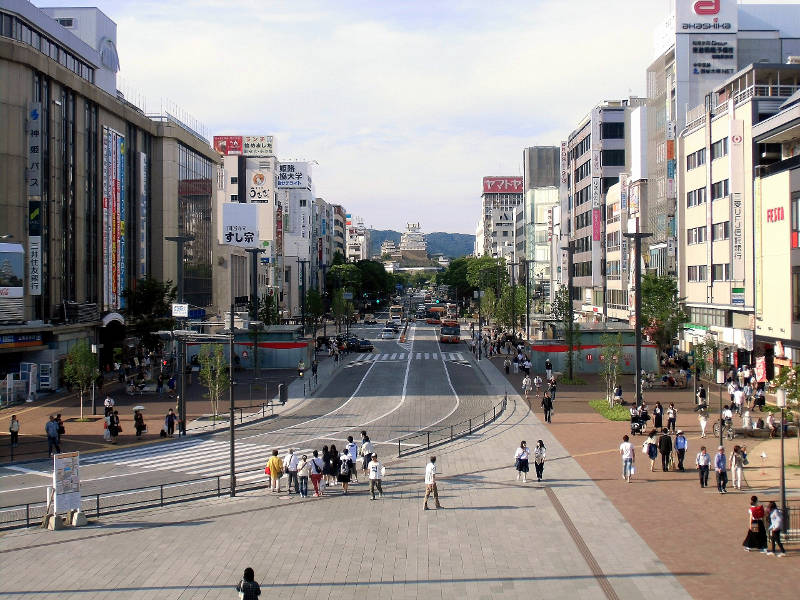 Otemae Dori
Otemae Dori
On the sides of Otemae Dori there are also several covered shopping streets full of small shops and restaurants. The most important is
Miyuki Dori, a long covered street that starts right in front of the north exit of the station, a few meters to the right of Otemae Dori, and almost reaches the castle. There are several other covered shopping streets, perpendicular or parallel to Miyuki Dori.
Himeji Castle area
Il castello di Himeji si trova a circa un chilometro di distanza da Himeji station, sempre dritto percorrendo la strada Otemae-dori. Arrivando nella zona del castello da questa strada, potete attraversare l'unico ponte sul fossato che vi troverete davanti (
Sakuramonbashi) ed arrivare in un'ampia area nota come
Sannomaru, caratterizzata da un enorme prato con alberi di ciliegio. Essendo accessibile a tutti senza biglietto, è un luogo molto popolare per scattare foto al castello. Qui troverete anche la biglietteria per proseguire la visita del castello a pagamento. Il castello di Himeji è circondato a 360 gradi da un parco, nel quale si trovano altre attrazioni turistiche: un museo d'arte, un museo di storia, un giardino tradizionale e uno zoo.
Himeji Castle
(admission 1000¥, opening hours 9-17, until 18 from the end of April to August)
Himeji Castle, a UNESCO World Heritage Site since 1993, is considered by many to be the most beautiful castle in all of Japan. It is also nicknamed Shirasagijō ("white heron"), due to its elegant white exterior. The first building was erected during the founding of the city, which took place in 1333. What we see today is a reconstruction carried out between 1603 and 1609. Since then, this castle has been lucky not to have been destroyed anymore, neither by war nor from earthquakes or other natural events (unlike many other castles in Japan). For this reason it is today one of the castles with the highest historical value as well as the most visited by tourists.
The castle complex is made up of over eighty buildings, connected by a series of gates and winding paths. Two buildings can be visited internally. The main keep is a six-story wooden structure that visitors can access through an entrance on the lower level of the building and ascend via a series of steep stairs. Each floor gets progressively smaller as you go up. Floors are generally unfurnished and show only a few information signs. The top floor houses a small shrine and allows visitors to peek in all directions over the city of Himeji from above. The other building that can be visited is the western bastion, called Nishinomaru, a long building that once served as the residence of a princess.
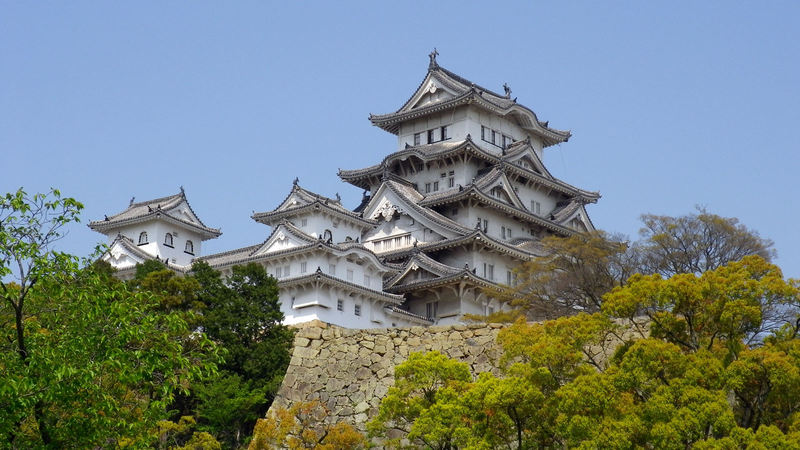
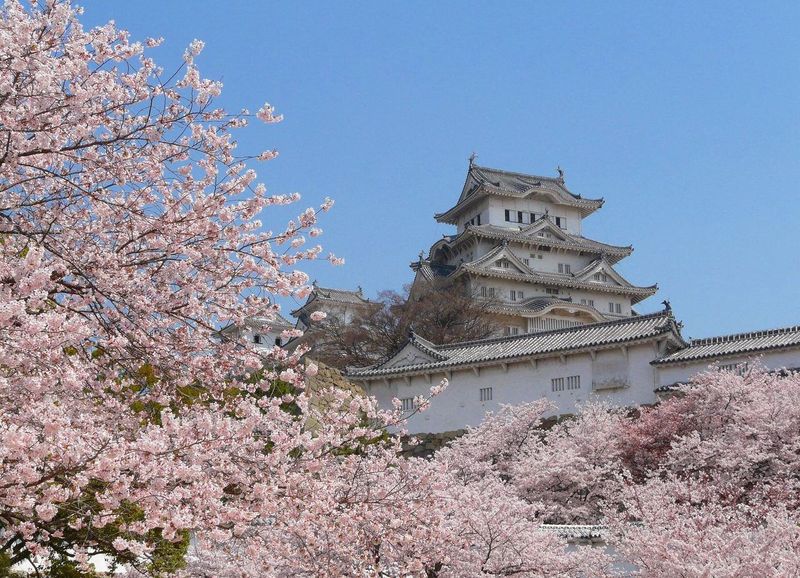
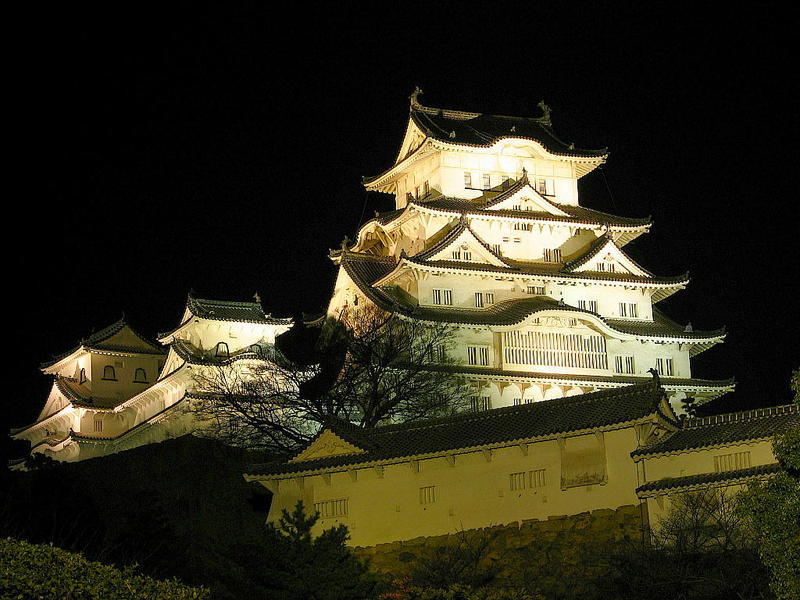
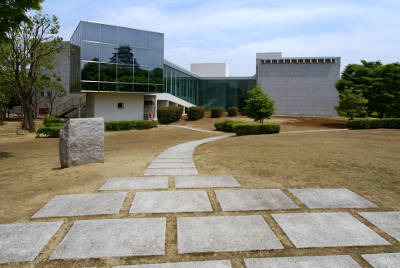
Hyogo prefectural Museum of History
(admission 200¥, opening hours 10-17)
The Hyogo Prefecture History Museum is located in the northeast corner of the large park surrounding the city's famous castle. The first floor of the museum can be visited for free. Here you will find a room dedicated to the history of the Hyogo region, a reproduction of an ancient Japanese house, and a 3D cinema room. The rest of the museum (admission 200 & yen;) mainly houses an area dedicated to the castle, with scale models and dioramas showing its history and construction and the development of the city, and an area dedicated to the traditional festivals (matsuri) of Kobe and several rural locations in Hyogo prefecture, including examples of the huge floats typical of the matsuri.
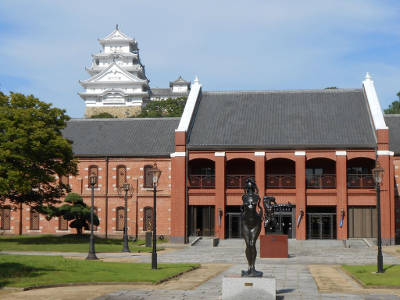
Himeji City Museum of Art
(admission 210¥, opening hours 10-17, closed on mondays)
This city art museum is housed in a historic red brick building in the large park surrounding the city castle. Before the Second World War, the building was a military structure, later it became the seat of the Himeji Town Hall, and in April 1983 transformed into a museum. The permanent collection is quite small, the museum can be visited in half an hour. There is also an area dedicated to any temporary exhibitions. In front of the museum, an elegant garden houses some statues.
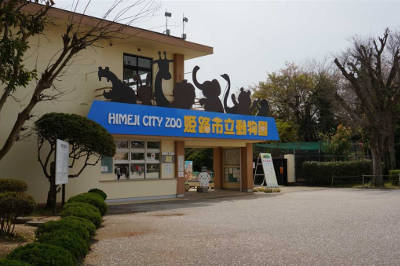
Himeji City Zoo
(admission 210¥, opening hours 10-17)
A small city zoo, opened in 1951. The animals are locked up in very small cages, and this has provoked the protests of many animal rights activists for years.
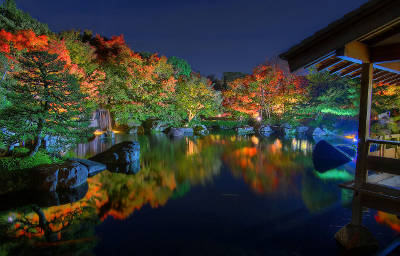
Kokoen Garden
(admission 310¥, opening hours 9-18, 9-17 from September to mid-April)
A large garden built near the castle in 1992, which inside includes nine separate gardens, each designed following a different traditional style of the Edo period (1603-1868). Among all, very interesting is the Cha-no-niwa, which means "tea ceremony garden", inside which there is an authentic tea room open to visitors.
Mount Shosha
Mount Shosha (書写山, Shoshazan)i s a 371 meters high mountain, located about 7 km from the center of Himeji and covered by a dense forest. In the middle of this forest there is a very old temple complex, founded in the year 966, which takes the name of
Engyōji Temple. To reach Engyōji you have to go up the mountain via a well-marked path (travel time approximately 1 hour). Alternatively, you can shorten the route considerably by taking the
Mount Shosha Ropeway (600¥, 1000¥ round trip).
The entranc to the temple area is not free, but costs 500¥. Opening hours 8:30-18:00.
Both the starting point of the trail and the departure station of the cable car can be reached by bus from Himeji station (north exit). The service is offered by the company
Shinki with orange buses. In particular, you must take line
No.8, with departures every 15 minutes, and get off at the "Mount Shosha Ropeway" stop (書写山ロープウェイ). The cost of the journey is 260¥ and it takes about half an hour.
Near the arrival station of the cable car there is a panoramic terrace from which you can see the city of Himeji.
The main gate of the temple (
Niomon) is about a 10-15 minute walk from the cable car terminus. Alternatively, you can also take a small bus (250¥). The main temple building (
Maniden) is another 10 minute walk, and then you can only continue on foot.
Scattered through the forest, following the various paths, you will encounter numerous other buildings, including the gym (
Jogyodo), the dining room (
Jikido), the auditorium (
Daikodo), the Honda family tomb and other smaller buildings. Get a map, which you can find at the cable car station, and explore this magical mountain
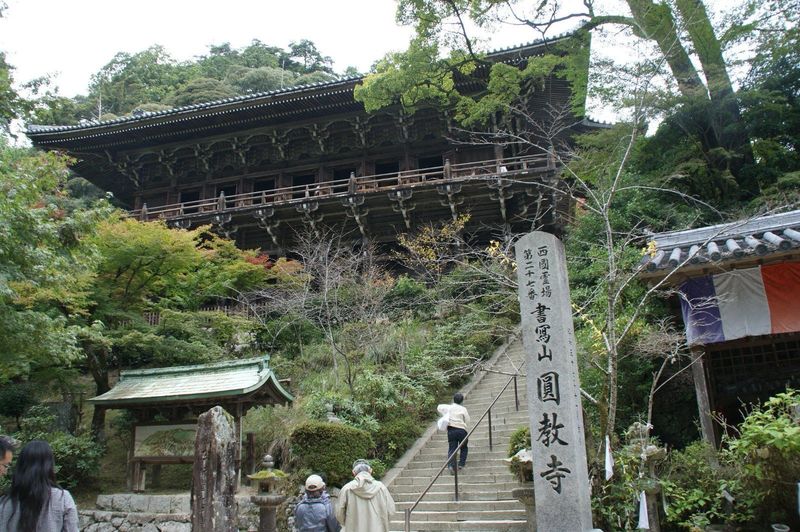 the main temple building (Maniden)
the main temple building (Maniden)
The locations of the film The Last Samurai
Due to its beautiful scenery, devoid of modern constructions, Mount Shosha and Engyōji Temple have often been used as filming locations for films and TV series set in feudal Japan. One of the most popular among the Japanese is NHK's dorama
Musashi (2003). The temple has also become very famous among foreigners, after being used as a location for some filming of the famous film
The Last Samurai (2003).
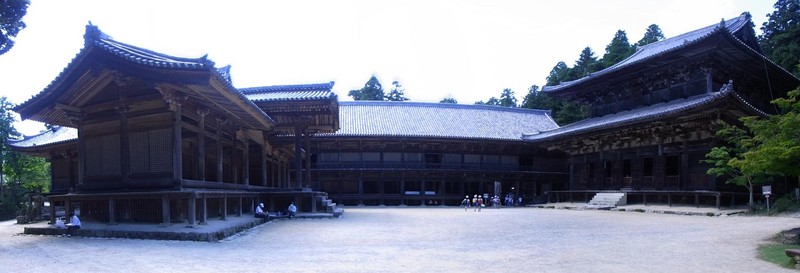 one of the areas of the temple used for the film
one of the areas of the temple used for the film
Where to stay in Himeji
Most foreign tourists visit Himeji on a day trip, without staying overnight. This does not mean that you do not want to go against the tide and enjoy the town of Himeji even after a certain time when the city is empty of tourists and only the locals remain. The perfect areas to stay are the surroundings of Himeji station and the road between the station and the castle.
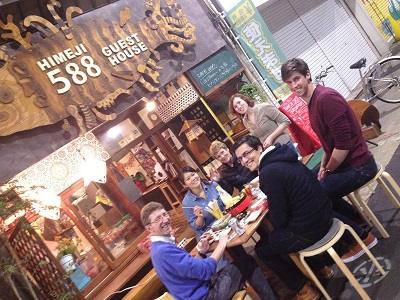
One of the cheapest options ever to spend the night in Himeji. It is a guest house located along a characteristic shopping arcade, 500 meters from the castle and 700 meters from Himeji station (north exit). The guest house has both private rooms and dorm beds, divided by gender, starting at 2300¥ per night. Inside there is a typical atmosphere of a small family-run hostel, you will have to deal directly with the owners who are very kind people.
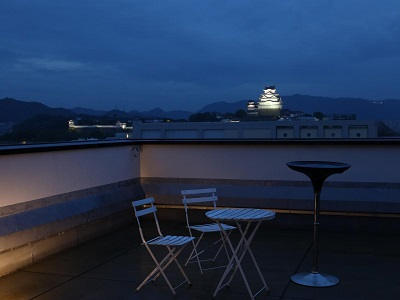
Wing International is a business hotel chain with hundreds of hotels throughout Japan, affordable and with good quality standards. This hotel is located 400 meters from the castle and 700 meters from Himeji station (north exit). The rooms are okay. Two points in favor of this hotel are the
free bicycles available to guests and a roof terrace from which you can enjoy a beautiful view of the castle. Single rooms starting from 4500¥, double rooms from 5500¥.
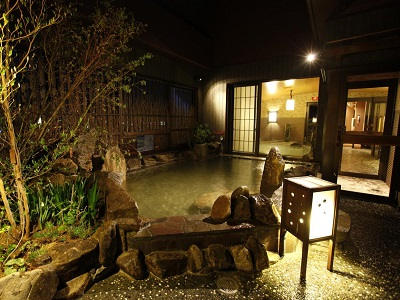
Dormy Inns are our favorite hotel chain in Japan. This hotel is located next to Himeji Station (South Exit), a 20-minute walk from the castle. Small but modern rooms equipped with all comforts. On the top floor there is a splendid onsen with indoor and outdoor thermal baths and sauna. Like all Dormy Inns, free ramen in the evening for all guests. Single rooms from 5500¥, double rooms from 6500¥.
How to get to Himeji
From Osaka
From
Shin-Osaka station you can take the
shinkansen trains that reach Himeji station in about 30 minutes. This option only makes sense if you are a holder of the Japan Rail Pass (be careful to avoid the Nozomi trains, not covered by the pass), otherwise the cost is prohibitive and highly unjustified (3810¥ one way).
From
Osaka station it is possible to take the
JR Kobe line. There are different types of trains along this line. In particular, we recommend the "
Special Rapid Service" trains reaching
JR Himeji station in exactly one hour at a price of 1520¥ ;. Departures every 15-20 minutes.
From
Hanshin Umeda station it is possible to take trains of another railway company other than JR, arriving at
Sanyo Himeji Station, located right next to the main JR Himeji station.
These trains have an excellent frequency, on average every 15/20 minutes, and are the cheapest alternative ever to reach Himeji from Osaka, albeit slower. A ticket costs 1300¥ and you arrive at your destination in 95/100 minutes.
From Kyoto
From
Kyoto station you can take the
shinkansen trains that get to Himeji station in about 55 minutes. This option only makes sense if you are a holder of the Japan Rail Pass (be careful to avoid the Nozomi trains, not covered by the pass), otherwise the cost is prohibitive and highly unjustified (5000¥ one way).
Alternatively, also from Kyoto station you will find "
Special Rapid Service" trains running along the JR Kyoto Line to Osaka station and from there continue along the JR Kobe line to Himeji (therefore there is no need to change trains).
The frequency of these trains is every 15/20 minutes. Total travel time 90 minutes, 2310¥ one way.
From Tokyo and the rest of Japan
Generally Himeji is visited as a day trip from Osaka or Kyoto, so first you will arrive in one of these two cities.
If you plan to travel directly to Himeji from Tokyo, there are also
Willer Express night buses.
Finally, you can reach Himeji by train directly without going through Osaka if you come from southern Japan (Okayama, Hiroshima, Fukuoka).
Map of Himeji
Guided tours, activities and other things to do
If you are planning a trip to Japan and you want to do something more than just visiting famous places and monuments, we suggest you to use
Rakuten Travel Experiences.
How to use Rakuten Travel Experiences
Rakuten Travel is a very useful website to
enrich your travel experience, especially if you are going solo or it's your first time in Japan.
Because of the language barrier (and more), in Japan it is very difficult to interact with the locals and to get off the tourist track.
Thanks to Rakuten Travel you can find a lot of interesting and sometimes unique
guided tours and activities all over Japan (and not only in Japan), that you would otherwise never be able to enjoy.
But there's more: on Rakuten Travel you can also
buy tickets for several famous attractions, events, transportation and other useful services for tourists. Last but not least, you can
reserve a table in hundreds of restaurants.
Some examples
Take a look at Rakuten Travel Experiences
You may also be interested in






